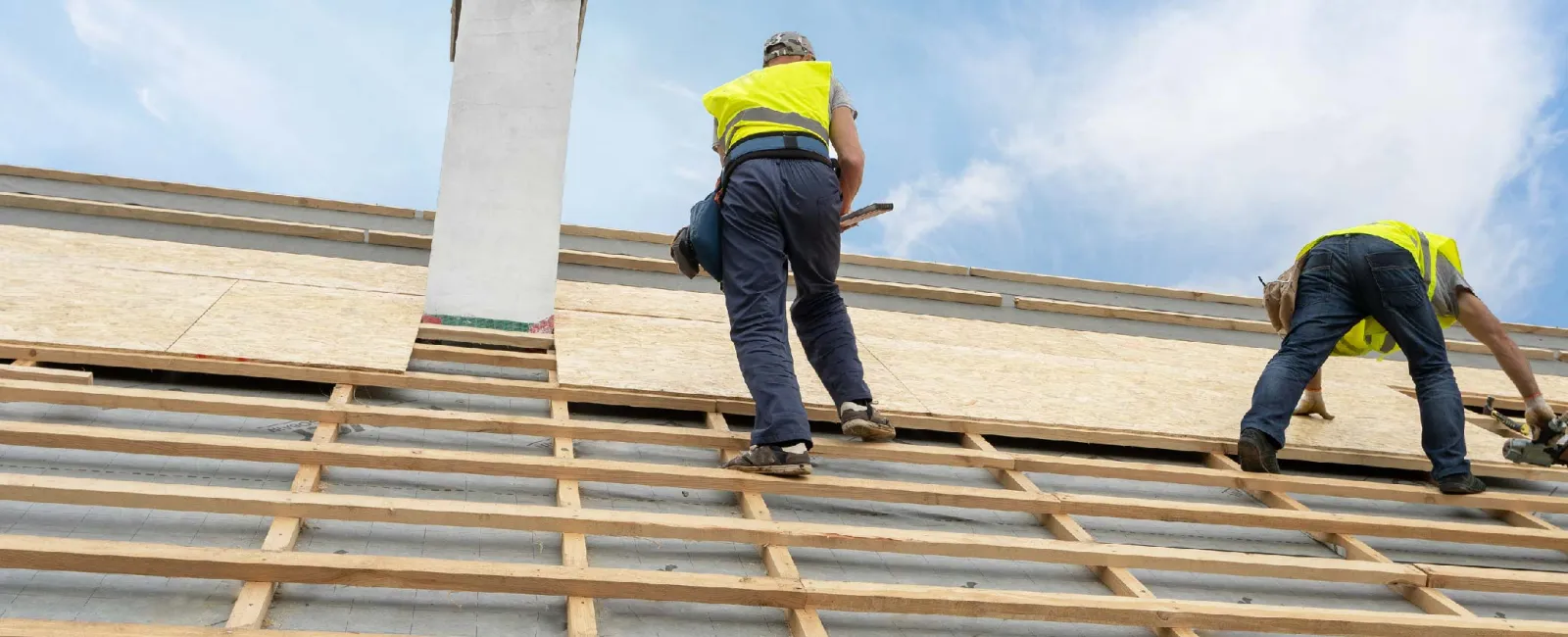Roof Diagram

Ever wonder what components go into your roof, and why each is important? Let's look at what makes up a roof and why each component is significant.
Parts of a Roof
Rafters
The support for the entire roof system
Decking
The decking of the roof goes over the rafters and is the material that is used to adhere to the waterproofing materials (underlayment, shingles etc.). The decking holds all the other materials in place and therefore needs to be strong.
Underlayment
Is a water-resistant barrier installed over the decking to add a layer of protection to your home before the shingles are installed
Gutters
Gutters are usually aluminum and are installed horizontally along the roofline to catch water runoff and divert it away from your house. They are open at the top to allow water to enter and flow to the downspouts. In some instances, gutters may be inadequate to the pitch and size of your roof. Always make sure gutters are properly sized to your roof.
Downspout
These are closed sections of the gutter system that move the collected water from the roof to the ground level. These downspouts direct the water away from your home foundation, protecting your home.
Valley
An architectural feature where two portions of the roof meet at an inside angle. Valleys in a roof are areas that are prone to water penetration. For this reason, it is very important to install Ice and water shields in all valleys. Not all roofing companies install ice and water shields. It is imperative that you choose one that does. At Northpoint Roofing, we install Ice and water in every valley on every install to ensure a water-tight roof.
Eaves
The eaves are the edges of the roof that overhang beyond the walls of the home to throw water clear of the walls. They are often very decorative to add architectural style to a home.
Drip Edge
A metal flashing used under the starting shingles near the gutters to keep rainwater from getting under the shingles and rotting the plywood deck.
Rake
The sloped side of a gable end
Gable
The high A-shaped wall ends of a house at the roof line
Soffit
The underside of an architectural structure such as an arch, or overhanging eves
Vent Pipe
Vent pipes are necessary on a roof to allow gasses to vent out of your home
Field of Roof
The central part of the roof away from the edges
Ridge
Tt is the peak where two roof peaks meet
Flashing
Flashings are installed in water-prone areas to keep water from penetrating under your shingles. They are typically made of rust proof metals like aluminum or galvanized steel. Many roofers will reuse these when replacing a roof, but this often leads to leaks from previous nail holes. At Northpoint Roofing we replace ALL flashing on every roof.
Hips
The external angle where adjacent sloping sides of a roof come together.
Fascia
Boards that cover the ends of roof rafters to give a finished appearance to the home.
Schedule Roofing Services
Here at Northpoint Roofing, we specialize in roof replacement. We use state-of-the-art drone technology and AI to inspect your roof for storm damage. If we confirm storm damage on your roof we walk you through the insurance process and help you get your new roof replaced using your insurance policy to cover the cost.

